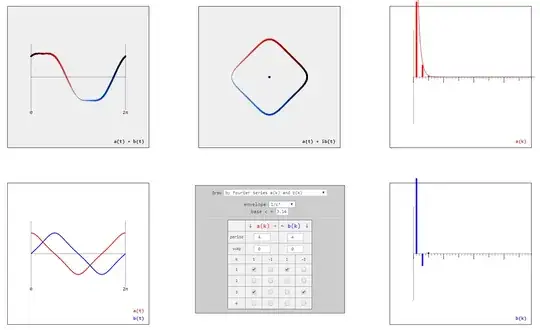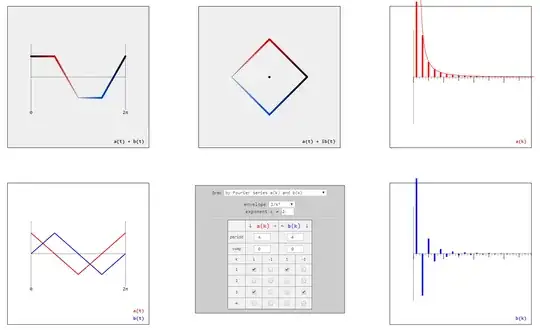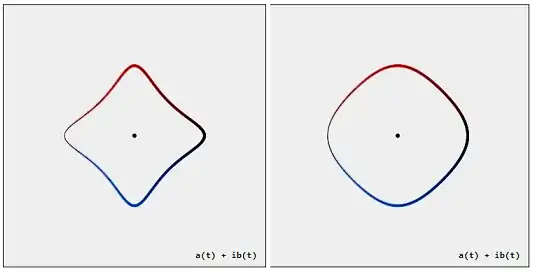[This is a follow-up question to this one: Figures and Numbers: Relating properties of geometric shapes and their Fourier series.]
Drawing shapes by some predefined Fourier series I found this square with rounded corners which is given by the Fourier series
$$a_k = \begin{cases} +\pi^{-k} & \text{ for } k \equiv 1 \pmod 4 \\ +\pi^{-k} & \text{ for } k \equiv 3 \pmod 4\\ 0 & \text{ otherwise } \end{cases}$$
$$b_k = \begin{cases} +\pi^{-k} & \text{ for } k \equiv 1 \pmod 4\\ -\pi^{-k} & \text{ for } k \equiv 3 \pmod 4\\ 0 & \text{ otherwise } \end{cases}$$
Compare this to the perfect square given by
$$a_k = \begin{cases} +k^{-2} & \text{ for } k \equiv 1 \pmod 4 \\ +k^{-2} & \text{ for } k \equiv 3 \pmod 4\\ 0 & \text{ otherwise } \end{cases}$$
$$b_k = \begin{cases} +k^{-2} & \text{ for } k \equiv 1 \pmod 4\\ -k^{-2} & \text{ for } k \equiv 3 \pmod 4\\ 0 & \text{ otherwise } \end{cases}$$
Note that for bases different from $\pi$ in the formulas for $a_k$ and $b_k$, the rounded square hasn't got so "straight" sides anymore, e.g. for base $2.5$ and $4.5$:
My question is:
Might it be true, that for base $\pi$ in the formulas for $a_k$, $b_k$ above, the resulting shape has "maximally straight" sides? And if so: How to prove it?
First, of course, one has to define what "maximally straight" means.
For the sake of comparison here is the unrounded square with exponents $1.5$ and $2.5$ instead of $2$ in the corresponding formulas. As in the case of the rounded square, $2$ (instead of $\pi$) yields the "maximally straight" sides.



